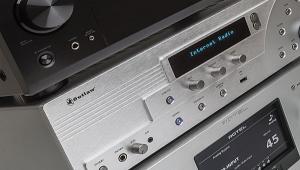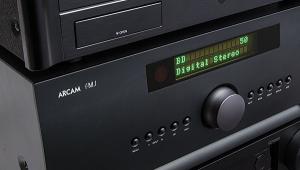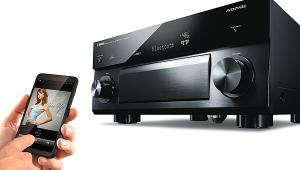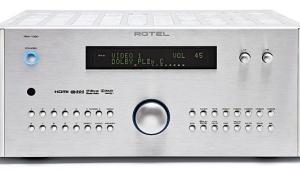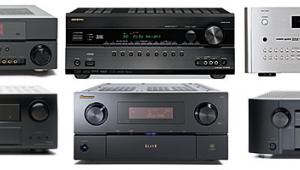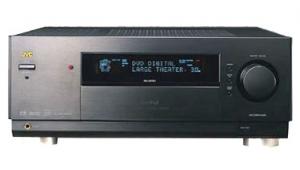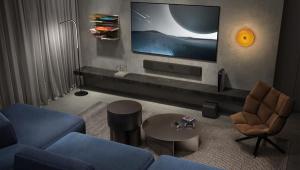How to Buy an AVR Page 2
Driving a 5.1.4 system requires a 9.1-channel AVR, or one of the few 7.1-channel receivers with nine-channel surround processing, to which you can add an outboard stereo amplifier to build out the 5.1.4 system. And the flagship 7.1.4 configuration requires a top-end AVR with 11 channels of amplification, or a 9.1-channel AVR with 11.1-channel Atmos/DTS:X processing (to allow the addition of a stereo amp).

A newer development is the inclusion of Atmos in some lower-end 5.1-channel receivers that can be configured for a 3.1.2 system, with height channels used in place of the traditional rear surround channels. (See our review of the Pioneer VSX-832 receiver on page 64 to get our take on this.) The last suite of essential listening modes found in AVRs is for decoding matrix-surround-encoded two-channel sources (found on some legacy programming) and converting two-channel stereo recordings or TV shows into quasi surround sound. The popular Dolby Pro Logic IIx and DTS Neo:6 remain the standards for this—though Pro Logic IIx has been supplanted at least in Atmos-enabled AVRs by Dolby Surround, which incorporates upmixing of stereo or non-Atmos discrete multichannel soundtracks to fill out the full surround speaker layout whether Atmos speakers are present or not. The DTS version of this is called Neural:X. Both are effective in picking up spatial cues in stereo and conventional 5.1 and 7.1 soundtracks to create a larger ambient bubble or place effects overhead, though they may sometimes sound unnatural with music.
Compression and Volume Modes
When you need to turn down the volume to avoid disturbing the family (or the neighbors), dynamic compression and volume normalization can help you hear quiet dialogue without being blasted by the special effects, and they can spare you from aggressively riding the volume control during TV shows and movies. Some AVRs still come with a Night mode for this, but they don’t typically achieve the performance of third-party offerings by Dolby, Audyssey, and THX. Audyssey Dynamic EQ and THX Loudness Plus (offered on THX-certified receivers) seek to maintain proper frequency balance and dialogue clarity when the volume gets lower, as does Dolby Volume. That Dolby mode, as well as Audyssey Dynamic Volume, can also help minimize swings in loudness as you transition between TV programs and commercials, or between source components with different output levels that you can’t adjust in the setup of the source or receiver.
Wired Up
AVRs now come fairly well loaded with HDMI connections and, increasingly, little else for legacy sources or TVs that use component video or (gasp!) composite video. You’ll want the latest HDMI version, which currently is HDMI 2.0a, mated with the latest copyright management, HDCP 2.2. Having up-to-date HDMI means that your AVR will successfully pass copyrighted video of up to 4K/60-hertz resolution, including HDR-encoded signals, from modern sources like Ultra HD Blu-ray players and 4K streaming boxes to a modern 4K display.
Keeping up with HDMI versions, however, is like keeping up with the Joneses: It’s a neverending battle. The upcoming HDMI 2.1, discussed in Sound & Vision and elsewhere, greatly increases maximum signal bandwidth from 18 gigabits per second to 48 Gbps and will ultimately allow passage of 4K/120-Hz and 8K/60-Hz video signals. Meanwhile, it will also enable other features, such as the ability to receive immersive audio signals like Dolby Atmos bitstreams via an AVR’s Audio Return Channel (ARC) HDMI connection. These are forward-looking capabilities that are expected to give this new version of HDMI greater longevity, though it could take many years for source components and displays to fully grow into the new connection. Nonetheless, if you want an A/V receiver that will continue to pass signals and perform its video switching function as sources and TVs evolve well into the future, you’ll need to wait until HDMI 2.1 begins appearing in new AVRs, probably in 2018.
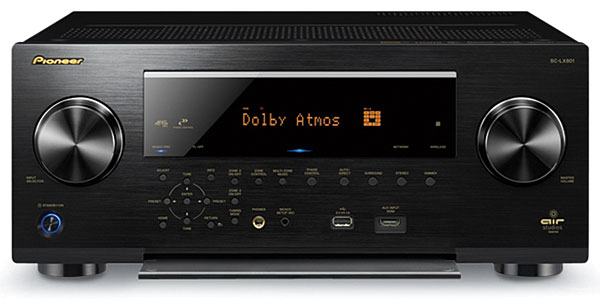
Beyond HDMI considerations, you’ll also find digital and analog audio inputs for a CD player or other legacy components—and analog phono inputs have become more common again, thanks to the resurgence of vinyl LPs in recent years. Multichannel 5.1- or 7.1-channel analog inputs, once a mainstay on better AVRs for the connection of high-end disc players that use their own multichannel digital-to-analog converters (DACs), have become hard to find now. Digital USB inputs, on the other hand, are standard, and they allow connection of a USB drive for access to music, video, and photo files. Most AVRs also offer Made for iPod USB connections and sometimes MHL inputs to feed audio or video from compatible Android phones.
Wireless and Multiroom Audio
Built-in Apple AirPlay, Wi-Fi, and Bluetooth wireless connections are now common in AVRs, allowing you to easily push music from a smartphone or tablet. Wi-Fi-based formats (including AirPlay) provide superior sound quality to Bluetooth and in most cases allow passage of hi-res audio files (see below). Additionally, most AVRs now come with Wi-Fi wireless multiroom audio capabilities that can be controlled via a smartphone app. Examples include Yamaha’s MusicCast, Denon’s HEOS, DTS’s Play-Fi (used by Anthem, Onkyo, Integra, Pioneer, and others), Google’s Chromecast (which was added this year to Onkyo, Integra, and Pioneer AVRs), and FireConnect (found in Onkyo, Integra, and Pioneer models). Sources connected to the AVR can typically be sent to compatible, standalone speakers or player/amp modules in distant rooms, and the smartphone app allows housewide control.
Network and Internet Services
Nearly all AVRs beyond entry-level models will connect to your home network via wired Ethernet or a built-in Wi-Fi transceiver. More often than not, they feature the ability to stream music directly via services that might include Pandora, Spotify (typically the premium paid service), and Tidal (which offers CD-quality or better streams). There’s also usually a service, such as TuneIn, to facilitate streaming of internet radio from local and distant broadcast stations. Keep in mind, though, that any services not found resident in the AVR can easily be streamed to it from your phone, which allows navigation through that service’s smartphone app. DLNA compliance, another common feature, lets you call up audio and image files from your network-attached computer or hard drive to play through your AVR and connected display.
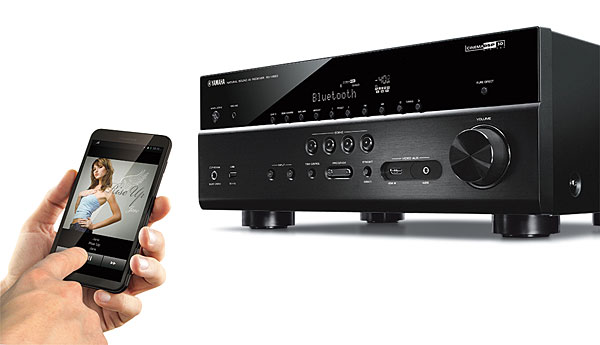
Hi-Res Audio
Most AVRs integrate a digital-to-analog converter (DAC) that accommodates hi-res music files (whose quality is better than the 44.1 kilohertz/16 bits of CDs), either streamed from your home network or delivered by hi-res disc or USB drive. Most DACs handle PCM audio files of at least 96/24 resolution, and many now decode up to 192/24 or even 384/32. Many AVRs—notably Sony’s, of course—will also play back the Sonydeveloped DSD format found on some hi-res downloads and Super Audio CDs (SACDs). Be advised, though, that you may ultimately get better sonics with hi-res files fed through a standalone DAC that goes between your computer and an analog input on your AVR, primarily because these usually offer asynchronous operation that improves sound quality by taking control of the data stream and not relying on the originating computer’s internal clock.
Video Processing
Along with the switching and passing through of the most up-to-date, copy-protected video signals via HDMI, some AVRs provide scaling of standard-definition or HD video signals to 4K. Similarly, they may provide some degree of picture adjustment to allow you to tweak the image for individual sources. That said, most TVs today do a fine job of scaling signals to their native screen resolution, so scaling is becoming rarer in AVRs, and its absence shouldn’t be considered a strong negative.
Auto Setup and Room Correction
Setting up a receiver involves making menu selections to tell the AVR how many and what type of speakers you have, what their locations are relative to the primary listening position, what their bass capabilities are, and what volume level each should be set at relative to the others so you hear a coherent soundfield. You can do all this manually—or just run the microphone-enabled auto-setup routine that’s included with most AVRs. In addition, many receivers will take it a step further and apply equalization across a range of frequencies to smooth out the in-room response, a particularly helpful benefit when it’s applied to low bass frequencies, where most rooms have their worst problems.
The licensed Audyssey and Dirac auto-setup/EQ technologies are perhaps the most widely known, along with the proprietary Anthem Room Correction (ARC) found in Anthem AVRs. Other AVR makers have proprietary systems that range in quality. Read reviews to see how these systems fare.
Remote Control Apps
Pretty much all the major AVR brands now offer apps that turn your smartphone or tablet into a touchscreen remote for your receiver, and these apps have been getting better year after year. They can greatly ease the operation of an AVR. You’ll need a network connection to the AVR and a Wi-Fi connection on that network for the app to talk to the receiver. If you’ve got an Apple iPhone, iPad, or iPod touch, or an Android phone or tablet, download the free app for the receiver you’re considering and check it out in demo mode.
Take the Journey
An A/V receiver requires some research before purchase. And if you’re not technically inclined, it also requires an intrepid spirit to install it and learn how to use it. Fortunately, there are plenty of pros around who can assist with installation and program a universal remote for you if you’re not up to the task. But whether you do it yourself or seek help, an AVR-based system will reward you with performance that is unparalleled by any soundbar, offering a sense of spatial realism and sound quality that transports you straight into your movie or sports event. You won’t be sorry you made the effort.
